Louisiana is home to various woodpecker species, each contributing its unique notes to the symphony of avian life.
From the vibrant Red-headed Woodpecker to the enigmatic Ivory-billed Woodpecker, these feathered percussionists play vital roles in the state’s ecosystems.
In this exploration, we delve into the lives of these captivating birds, examining their distinctive plumage, habitats, and foraging behaviors.
Some, like the endangered Red-cockaded Woodpecker, are deeply connected to specific ecosystems, while others, like the adaptable Red-bellied Woodpecker, thrive in various environments.
Join us on a journey through Louisiana’s woodlands and discover these beak-wielding musicians’ stories, challenges, and efforts to ensure their continued presence in the state’s diverse landscapes.
10 Woodpeckers of Louisiana
Here, we’ll discover the rhythmic drumming, vibrant plumage, and conservation challenges that define the woodpecker experience in the Pelican State.
1. Red-headed Woodpecker
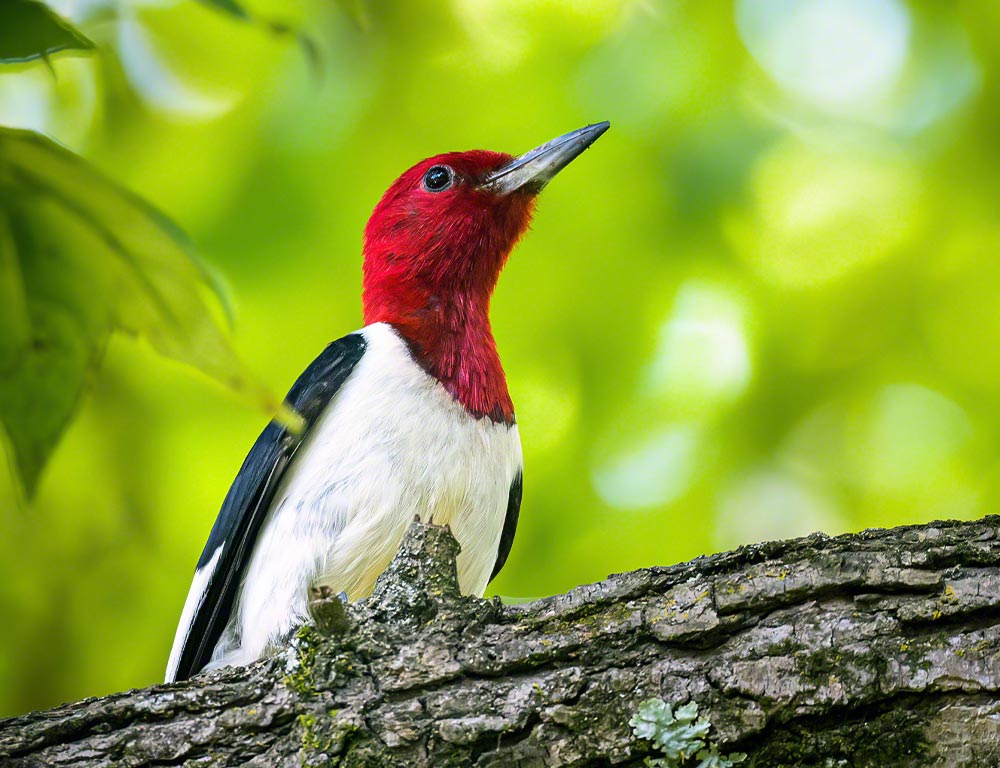
- Scientific Name: Melanerpes erythrocephalus
- Population: Varied, declining in some areas
- Life Span: Up to 9 years
- Size: 7-9 inches
- Weight: 2-3 ounces
- Food: Insects, fruits, seeds
The striking Red-headed Woodpecker boasts a vibrant crimson head and a black-and-white body.
Preferring open woodlands and farmlands, they are skilled acrobats, capturing insects mid-air or foraging on trees. Their unique foraging style involves catching insects on the wing or storing them in tree crevices.
They’re known for caching food by wedging it into bark for later consumption. These woodpeckers also consume fruits and seeds, showcasing their adaptable diet.
These birds are cavity-nesters, creating homes in dead trees or utility poles. Sadly, their population has decreased due to habitat loss, making conservation efforts crucial.
Red-headed Woodpeckers are social and communicate through calls and drumming, creating a lively presence in Louisiana’s diverse habitats.
2. Pileated Woodpecker
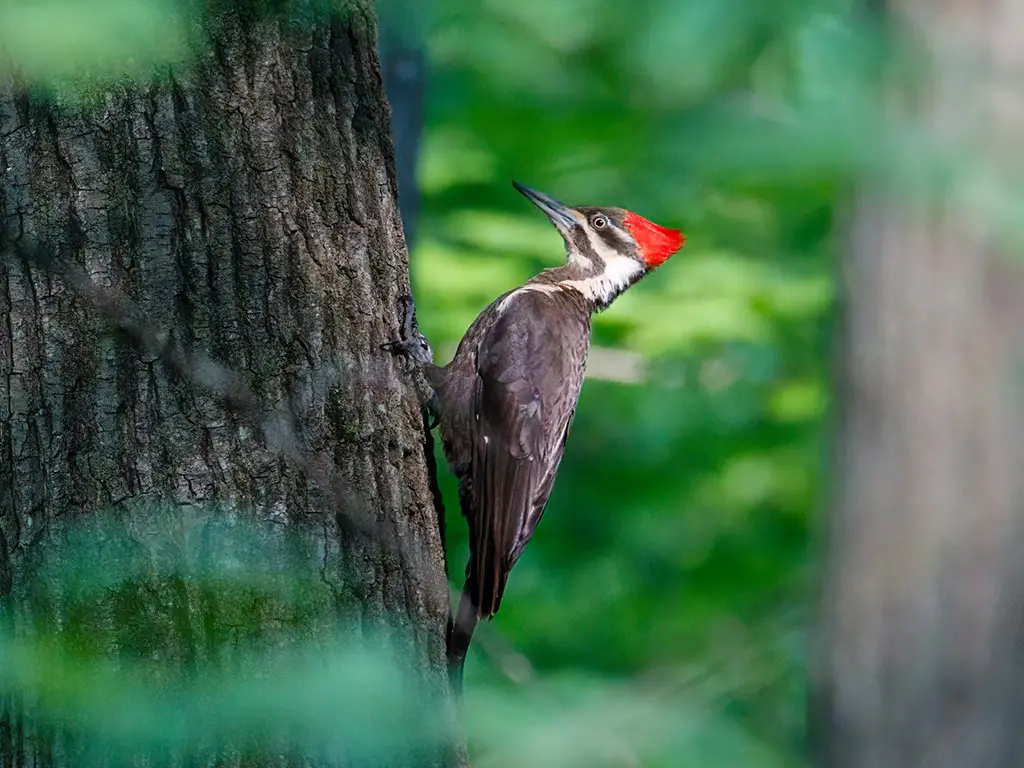
- Scientific Name: Dryocopus pileatus
- Population: Stable
- Life Span: Up to 12 years
- Size: 16-19 inches
- Weight: 8-12 ounces
- Food: Insects, fruits, nuts
The Pileated Woodpecker is an impressive species with its striking red crest and large size. Inhabiting mature forests and wooded areas, they use their strong bills to excavate rectangular holes in search of carpenter ants and other insects.
Their drumming resonates through the woods, marking territory and attracting mates.
Pileated Woodpeckers are also skilled climbers, using their zygodactyl feet to move up and down trees effortlessly. Their nesting sites are often large tree cavities, providing ample space for their chicks.
While not migratory, these birds may change habitats based on food availability. Conserving large, mature forests is crucial for sustaining Pileated Woodpecker populations in Louisiana.
3. Downy Woodpecker

- Scientific Name: Dryobates pubescens
- Population: Common
- Life Span: Up to 11 years
- Size: 5-7 inches
- Weight: 1-2 ounces
- Food: Insects, seeds, berries
The Downy Woodpecker, the smallest woodpecker in North America, is a common sight in various habitats, including woodlands, parks, and gardens.
Downy Woodpeckers are agile climbers, distinguished by their black and white plumage and a small red spot on males. These birds have a diverse diet, feasting on insects, seeds, and berries.
Their drumming and distinct calls contribute to the auditory richness of their surroundings. Downy Woodpeckers often use abandoned nest holes from larger birds, demonstrating adaptability in their nesting behavior.
Their ability to thrive in various environments makes them resilient, and birdwatchers in Louisiana can easily spot these charismatic woodpeckers in both urban and rural settings.
4. Red-cockaded Woodpecker
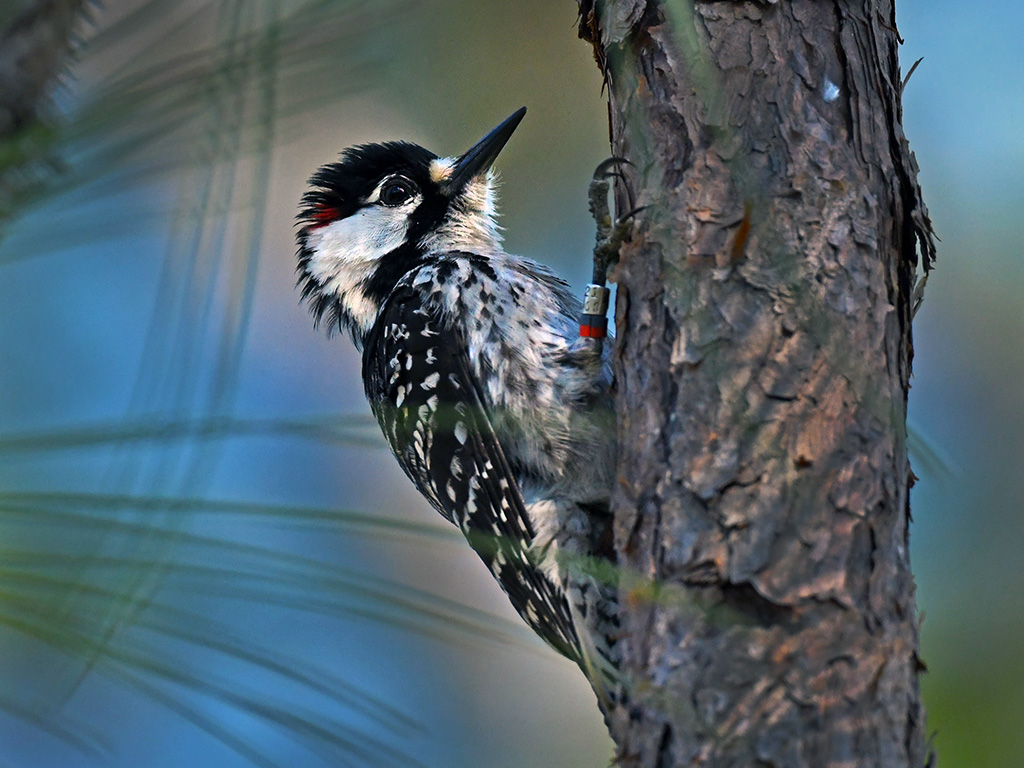
- Scientific Name: Picoides borealis
- Population: Declining, listed as endangered
- Life Span: Up to 10 years
- Size: 7-9 inches
- Weight: 1-2 ounces
- Food: Insects, especially ants
Endangered and reliant on mature pine forests, the Red-cockaded Woodpecker is a cooperative breeder, meaning family groups work together to raise chicks.
Recognizable by its black-and-white barred back and small red cap, this woodpecker primarily feeds on ants, using its specialized long bill to extract them from the bark.
These woodpeckers are habitat specialists, relying on the unique ecosystems longleaf pine forests provide. They excavate cavities in living pine trees, and their nesting sites are crucial for the survival of other species.
Conservation efforts in Louisiana aim to restore and maintain the longleaf pine habitat, which is essential for the Red-cockaded Woodpecker’s survival.
5. Red-bellied Woodpecker
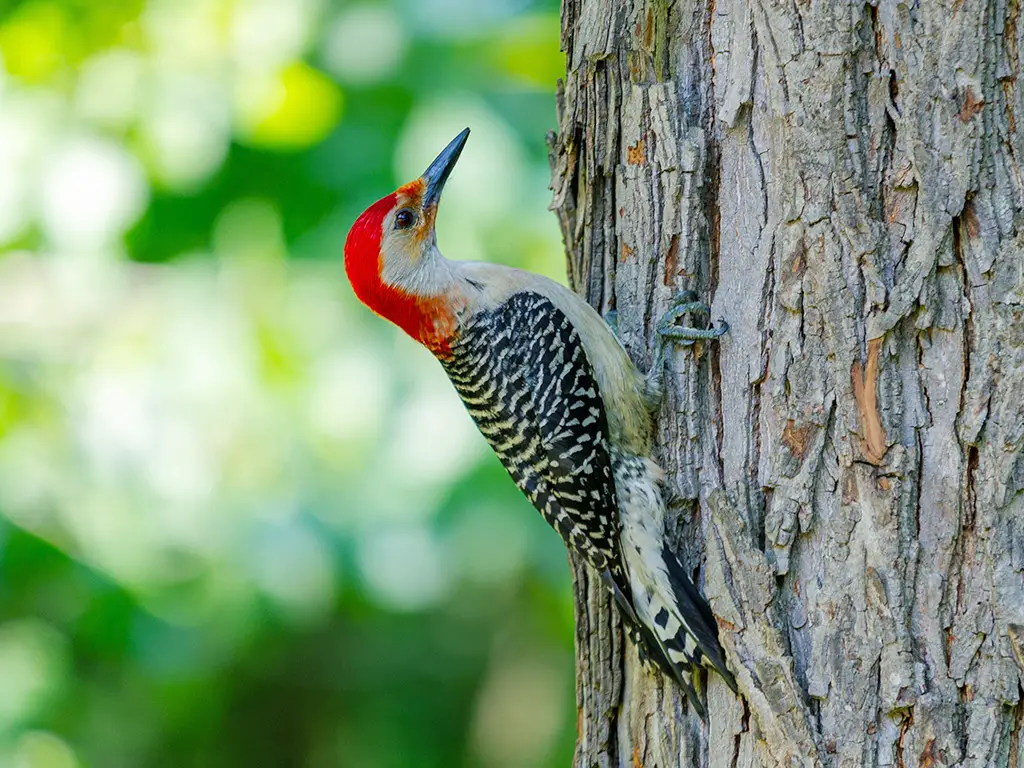
- Scientific Name: Melanerpes carolinus
- Population: Abundant
- Life Span: Up to 9 years
- Size: 9-10.5 inches
- Weight: 2-3 ounces
- Food: Insects, fruits, nuts
Despite the name, the Red-bellied Woodpecker’s red crown is more prominent than its slightly tinted belly.
Common in various habitats, including forests, suburbs, and parks, they are adaptable and versatile in their diet, consuming insects, fruits, and nuts.
These woodpeckers often store food in tree crevices, providing a backup during scarcity. Known for their distinctive rolling calls, they are vocal year-round.
Red-bellied woodpeckers are cavity nesters that use dead trees or nest boxes. Their adaptability to diverse environments makes them a familiar and beloved sight in Louisiana.
6. Ivory-billed Woodpecker
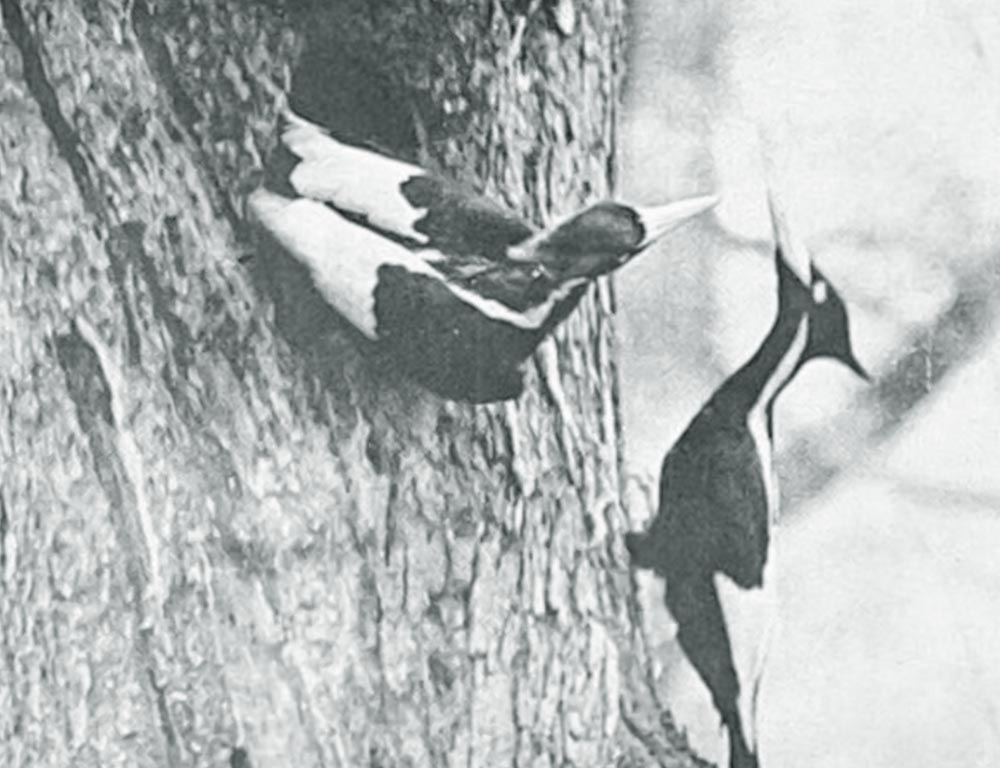
- Scientific Name: Campephilus principalis
- Population: Critically endangered, possibly extinct
- Life Span: Unknown
- Size: 19-21 inches
- Weight: 1.1-1.8 pounds
- Food: Insects, larvae, possibly small vertebrates
Once thought extinct, the Ivory-billed Woodpecker’s existence remains uncertain. Historically found in bottomland hardwood forests, these woodpeckers are known for their large size and distinctive ivory-colored bills.
They forage by scaling bark in search of insects and larvae, potentially even capturing small vertebrates. Due to extensive habitat loss and limited sightings, the Ivory-billed Woodpecker’s status is precarious.
Intensive conservation efforts are required to protect and restore their potential habitats in Louisiana, and ongoing research aims to confirm their presence.
7. Northern Flicker
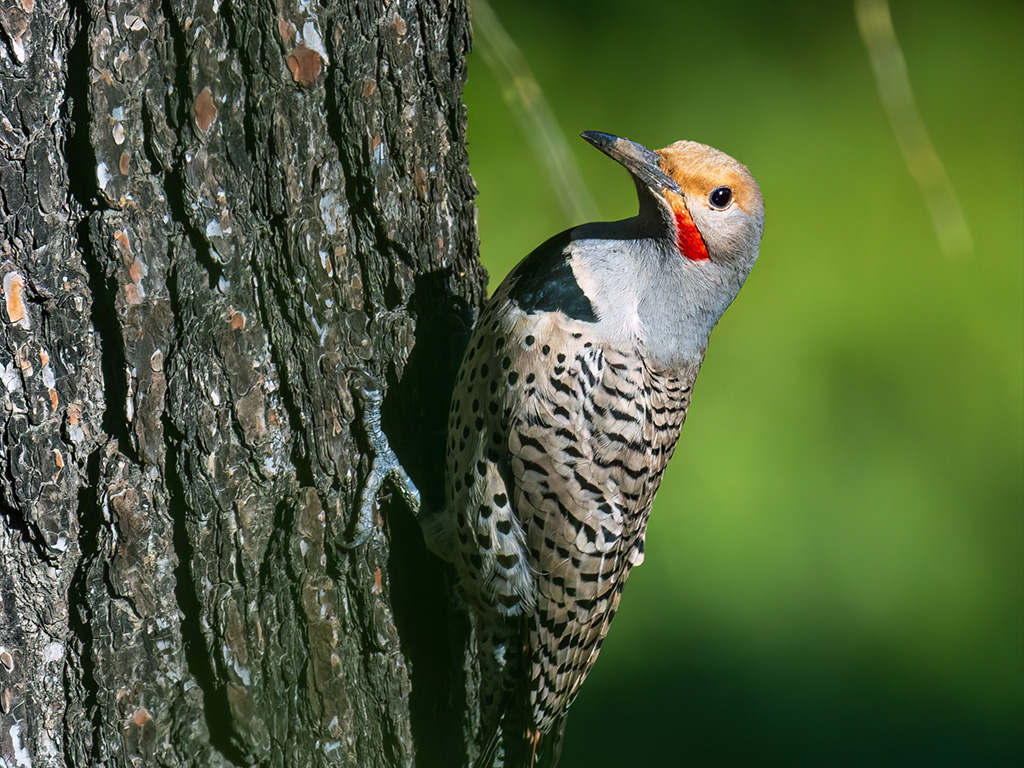
- Scientific Name: Colaptes auratus
- Population: Stable
- Life Span: Up to 9 years
- Size: 11-14 inches
- Weight: 3-5 ounces
- Food: Insects, fruits, seeds
The Northern Flicker is a distinctive woodpecker with a beige coloration and black spots on its upper parts, complemented by a red nape.
Common in open habitats like forests, suburbs, and grasslands, they have a varied diet that includes insects, fruits, and seeds.
Northern Flickers are ground feeders, often foraging for ants and beetles on the ground. Their drumming and calls contribute to the auditory richness of diverse environments.
These woodpeckers prefer open landscapes with scattered trees, and they readily adapt to human-altered environments, making them a widespread and familiar presence in Louisiana.
8. Yellow-bellied Sapsucker
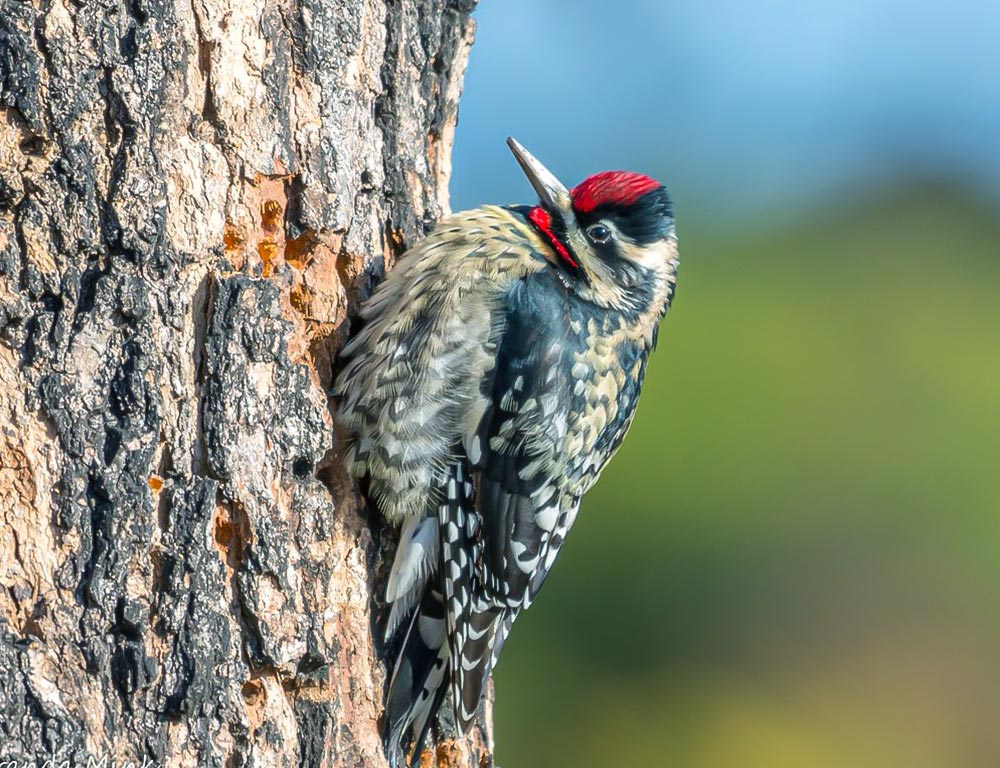
- Scientific Name: Sphyrapicus varius
- Population: Stable
- Life Span: 4-8 years
- Size: 7-8.5 inches
- Weight: 1.5-2 ounces
- Food: Sap, insects, fruits
Named for their habit of drilling neat rows of holes in trees to feed on sap, Yellow-bellied Sapsuckers have a distinct black and white plumage with a red forehead and throat.
They primarily breed in boreal and northern hardwood forests but migrate to the southeastern United States in winter. These woodpeckers feed on sap by creating wells in trees and then consume the sap and any insects attracted to it.
Yellow-bellied Sapsuckers also eat fruits and insects, showcasing a varied diet. Their migratory behavior and unique feeding habits make them an interesting and seasonally visible species in Louisiana.
9. Red-naped Sapsucker
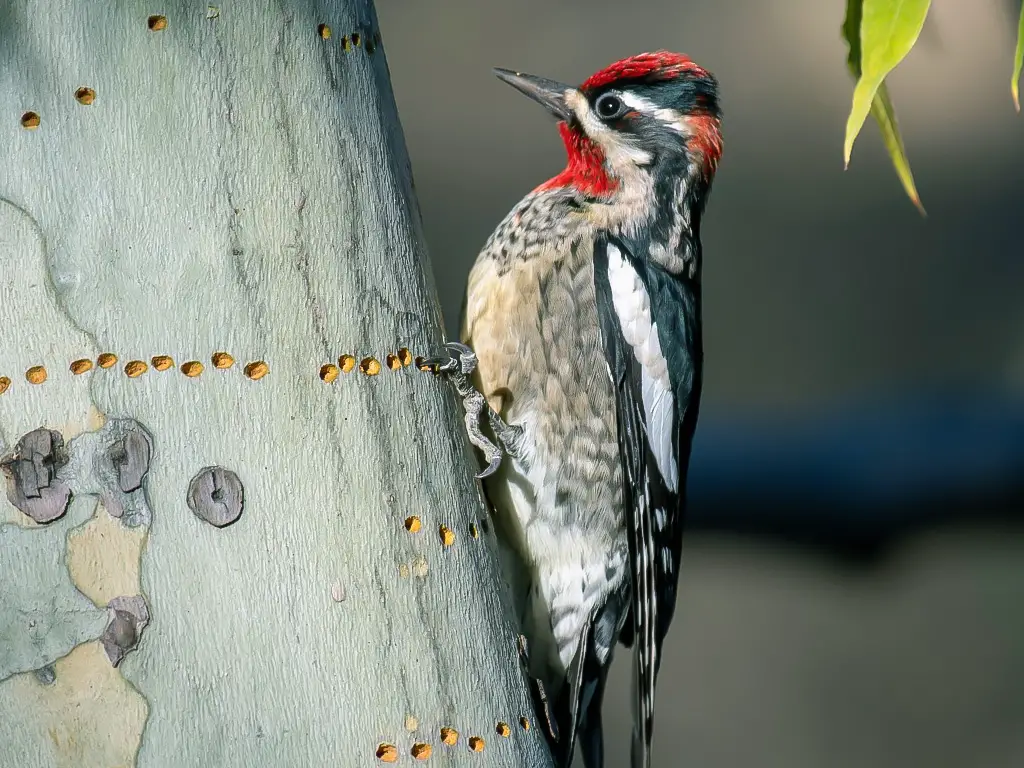
- Scientific Name: Sphyrapicus nuchalis
- Population: Stable
- Life Span: 4-8 years
- Size: 8-9 inches
- Weight: 1.7-2.5 ounces
- Food: Sap, insects, fruits
Endemic to western North America, the Red-naped Sapsucker has a distinctive black and white plumage with a red nape.
They inhabit coniferous and mixed forests. Like the Yellow-bellied Sapsucker, they drill holes in trees to feed on sap, creating characteristic rows of sap wells.
These woodpeckers also consume insects and fruits, displaying flexibility in their diet.
During the breeding season, their courtship involves drumming and calling. While not as widespread as some other woodpecker species, Red-naped Sapsuckers can be found in the mountainous regions of Louisiana.
10. Lewis’s Woodpecker
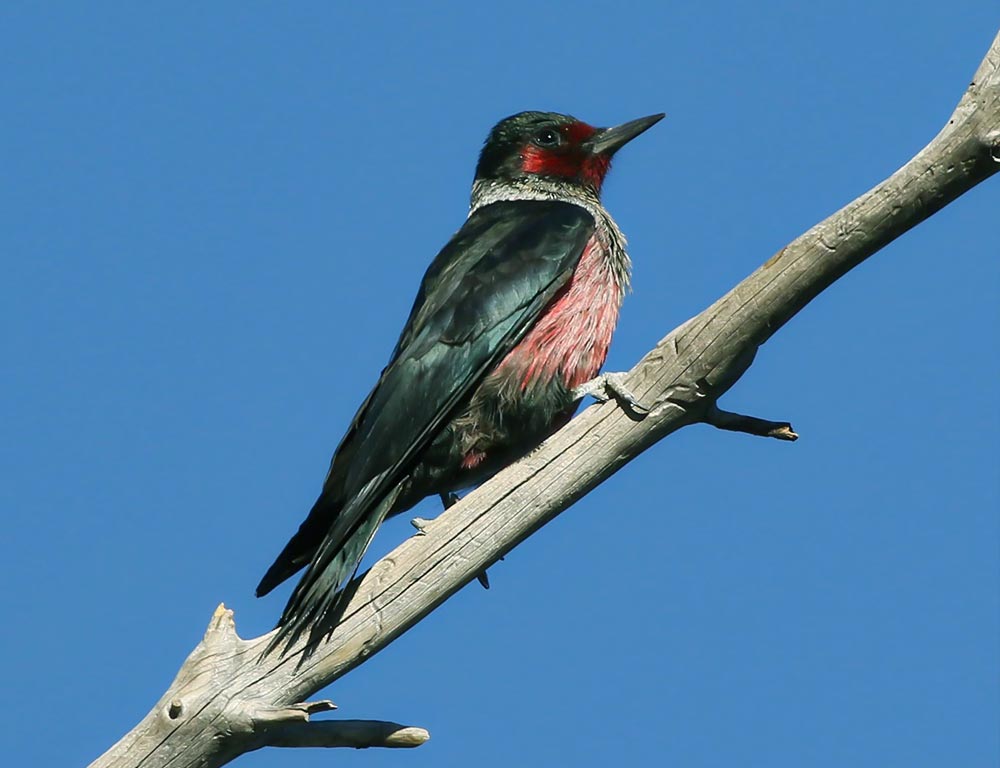
- Scientific Name: Melanerpes lewis
- Population: Declining
- Life Span: Up to 10 years
- Size: 10-11 inches
- Weight: 4-6 ounces
- Food: Insects, fruits, nuts
Named after Meriwether Lewis of the Lewis and Clark expedition, this woodpecker has a unique appearance with a dark greenish-black sheen on its head and body.
Lewis’s Woodpeckers inhabit open woodlands, often in areas with burned or recently disturbed vegetation. In contrast to other woodpeckers, Lewis’s Woodpeckers catch insects in flight and also feed on fruits and nuts.
They are known for their habit of perching on exposed branches or poles. Conservation efforts are vital for preserving their habitat, as forest management practices can impact their availability of dead trees for nesting and foraging.
In Louisiana, observing Lewis’s Woodpeckers may require searching in specific habitats conducive to their unique lifestyle.
Wrapping Up
Louisiana’s woodpeckers contribute to the state’s rich avian diversity, each species offering unique behaviors, habitats, and conservation considerations.
From the vibrant Red-headed Woodpecker to the elusive Ivory-billed Woodpecker, these birds play crucial roles in their ecosystems.
Conservation efforts are paramount, particularly for endangered species like the Red-cockaded Woodpecker and potentially extinct Ivory-billed Woodpecker.
Understanding and appreciating the lifestyles of these woodpeckers is vital for fostering coexistence and preserving their habitats.